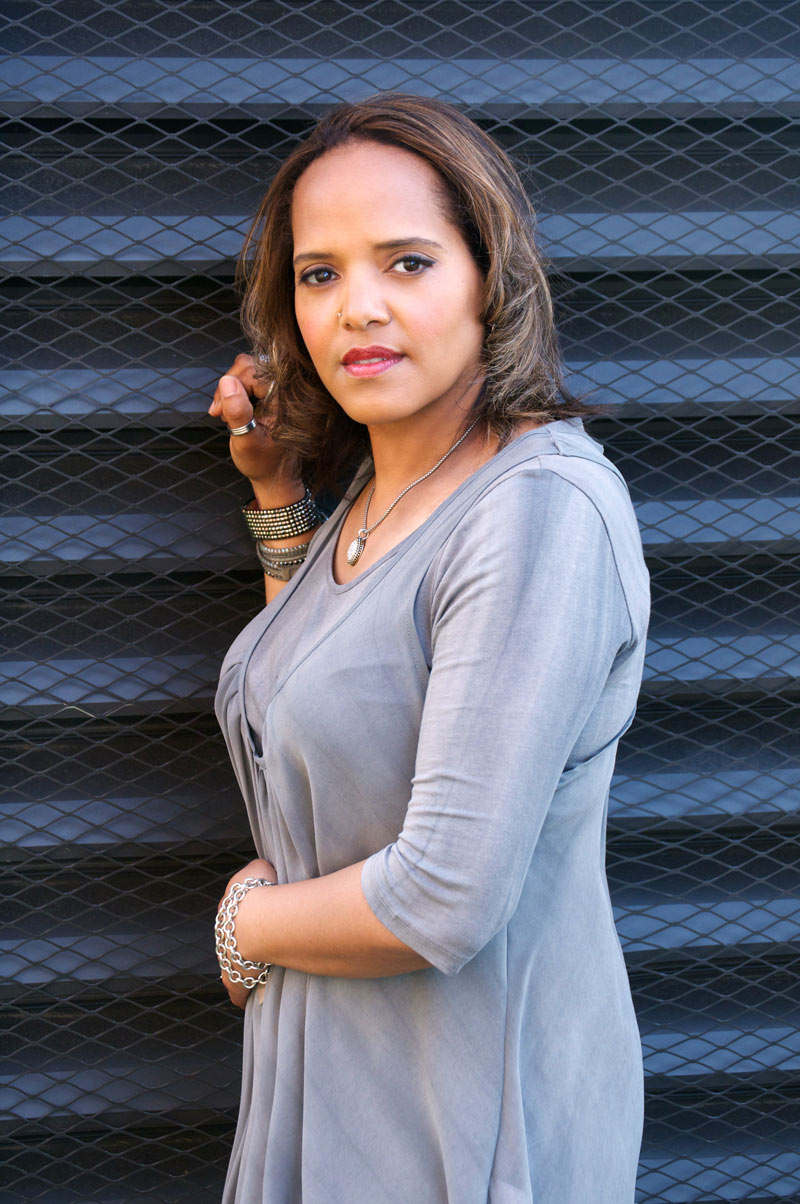Terri Lyne Carrington

Professor of Percussion Terri Lyne Carrington
In 2012 she won a Grammy in the Best Jazz Vocal Album category for Mosaic, a genre-bending collection of songs featuring an all-female ensemble. Last February, Carrington returned to the Grammy spotlight, winning the Best Jazz Instrumental Album award with Money Jungle: Provocative in Blue, a tribute to Duke Ellington’s 1962 Money Jungle album and her own jazz roots. Throughout her career, Carrington has established herself in jazz as a premier drummer, bandleader, and entrepreneur.
The granddaughter of a session drummer and daughter of a saxophonist, Carrington was a drum prodigy and began studying at Berklee with the late Alan Dawson when she was just 11. Music has remained at the center of her life.
She took weekly lessons until she graduated from high school. “Lee and Alma Berk saw me performing with Oscar Peterson, and I was offered a scholarship,” Carrington remembers. On the advice of Jack DeJohnette, Carrington moved to New York after graduating from Berklee in 1983 and began a stint with legendary trumpeter Clark Terry, whom she credits as one of her biggest mentors. “I learned a lot about developing my on-stage persona, being a bandleader, and professionalism,” she recalls. “One time I was late getting to a show and Clark was onstage playing my drums—that never happened again!”
Carrington became more widely known in musical circles, and in 1986 she landed a gig with saxophonist Wayne Shorter. “It was a big stylistic shift,” she admits. “Early on I learned the value of versatility, which has been a key to my success.” During the 1980s, she performed with luminaries such as David Sanborn, Stan Getz, and Cassandra Wilson, and at the end of the decade she relocated to Los Angeles. She achieved another milestone as the house drummer for The Arsenio Hall Show. Her funky drumming style and commanding on-screen presence was a perfect fit for the show’s edgy format. It increased Carrington’s visibility and gave her the chance to play with many A-list musicians in the Los Angeles scene.
At the same time, Carrington was developing her own solo career, beginning with her debut album Real Life Story on Verve Records in 1989. To date she has released seven albums as a bandleader while maintaining a career as a first-call drummer for artists including Herbie Hancock, Diana Krall, and the late Mulgrew Miller and George Duke.
Joining the percussion faculty at Berklee in 2006 came at a good time for Carrington. “I had been touring and playing other people’s music for most of my life, and I wanted to be closer to my family in Massachusetts. It struck me as a wonderful opportunity, and I was excited to return to the college.
“Teaching at Berklee has made me a better musician, because it’s forced me to codify elements of my natural playing and develop exercises to improve them,” she says. “I want students to approach my ensembles like any professional situation: a challenging gig.” One of her most unique ensembles is a collaborative musical theater effort with Amy Merrill and Rebecca Perricone, each show focusing on a specific artist such as Billie Holiday, Michael Jackson, Joni Mitchell, and others.
This theatrical element can be heard in the spoken-word portions that often appear on Carrington’s own recordings. “The human voice expresses music in ways that other instruments can’t. It eliminates some of the headiness of instrumental music and pulls the listener into another type of auditory experience.”
Throughout her career, Carrington has served as a mentor to other notable women musicians, including Esperanza Spalding ’05 and Shea Rose ’11, both of whom appeared on Mosaic. “I had been playing with Esperanza, Geri Allen, and Tineke Postma. After a while, it hit me that I was playing in an all-female band—and not by design. I realized how many wonderful women I had played with over the years. Suddenly the idea of an all-female ensemble seemed like a cause for celebration, and I wanted to document it.” Carrington is currently working on the second installment of Mosaic, featuring a strong r&b element and including Lalah Hathaway ’90, Paula Cole ’90, Valerie Simpson, and others. It’s scheduled for release in early 2015.
Carrington financed the entire album herself and licensed it to a publishing company, so she owns her own masters. “I try to pass on to my students that the business side of music is an art form in itself, constantly changing and evolving. It’s a highly creative process, much like playing.” She also notes, “Self-development is crucial. The days of managers and labels developing their artists are over. You have to do most of it on your own and build a team around yourself that will get you where you want to go.
“When you successfully brand yourself,” Carrington explains, “you move past just being a musician. There’s a wonderful persona you can carry if you do it right.” For her, having an appreciation of jazz history and tradition is crucial to carrying this persona with authenticity. “On the surface, it’s easy to get by not having absorbed the major developments of jazz and the background of your instrument. But if you go through the process, you emerge with greater depth to your playing and longevity.
“The trick is to respect this tradition while paying attention to what’s going on around you in the present,” she asserts. “It’s not a matter of staying a step ahead of everyone else, but maintaining an awareness of the present, absorbing it, and letting it come together to form an original thought. As long as you do that, it’s coming from a place of honesty.”




